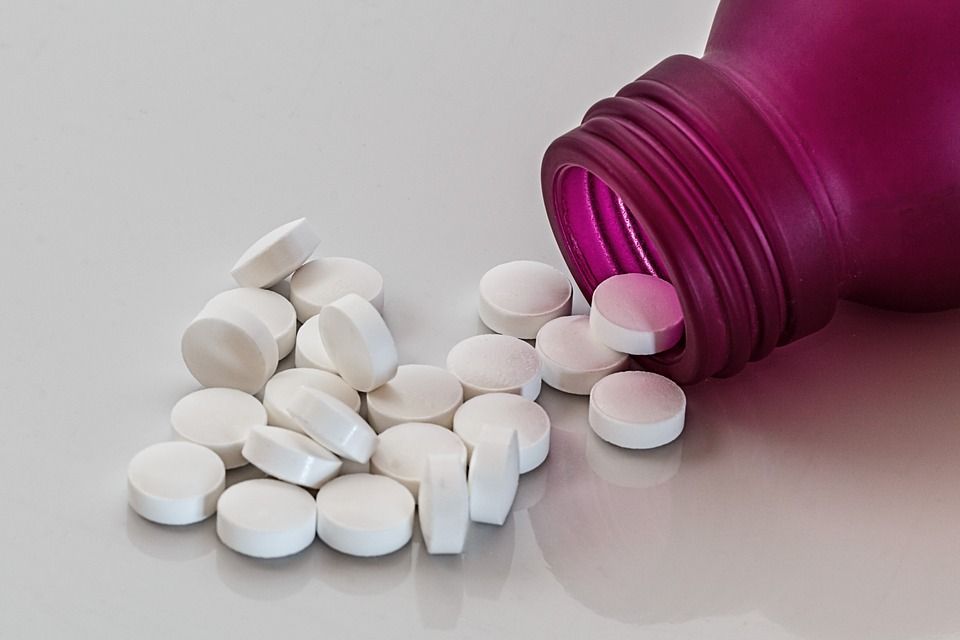Treatment centers across the country report that more young people under the age of 30 come with prescription drug abuse. 40 out of 47 treatment centers find that more young people are seeking help for an abuse of opioids, according to DR.
“We have only seen the tip of the iceberg. Already in September, we had as many young people under the age of 30 in treatment for opioid abuse as we had all of last year.” says Morten Aagaard, head of department at Drug Center Aarhus to DR.
Opioids are painkillers intended to treat severe pain. The pills are highly addictive, related to heroin and require a doctor’s prescription. The pills are legal if they come from the pharmacy, but according to DR’s research, they are also sold outside doctors and pharmacies to people who want to get a buzz.
Increase in police cases
In the National Unit for Special Crime (NSK), police inspector Søren Enevoldsen confirms that all of the country’s police circles see a similar trend.
“During the last three years, we have seen an increase in the number of cases involving opioids. It is both for own consumption and sale,” says Enevoldsen to DR.
During the past three years, the authorities have seized around 800,000 tablets, of which 8,000 are oxycodone, while the rest are tramadol.
“It is terrible that young people find themselves in a situation where they need to take painkillers or anxiety medication to get through everyday life,” says the police inspector.
Opioids responsible for numerous deaths
In the wrong hands, the drugs are extremely dangerous.
“Opioids are the drug on the illegal market that kills the most people. In 2020, we had 256 people who died due to drugs. The opioids alone were responsible for 120 deaths. It says something about how dangerous this drug is in unskilled hands,” says Henrik Rindom, chief physician and psychiatrist at Novavi Drug Counseling to DR.
The Center for Drug Research at Aarhus University estimates that between 50,000 and 55,000 young people aged 15-24 have problems with drugs to an extent that affects daily life.
There are no statistics on how many of them abuse opioids.
Mainstream problem
And these are people from all walks of life, say the experts.
“In the last 3-4 years it has developed into a mainstream problem that all kinds of people have. People from secondary schools, business schools and people from the labor market, explains department manager Morten Aagaard.
Why opioids have become more popular is difficult for experts to explain. But several of them point to a culture of perfection:
“Everything has to be so perfect. The demands are so high, and young people cannot live up to those demands. When you get a substance that makes everything inside calm down, and the anxiety of not being able to strike disappears, the body does not forget that feeling ” says Frederikke Mølgaard, head of department at the Decontamination and Stabilization Center Slusen to DR.
Easy to get hold of
In Denmark, according to the coverage of DR, it is very easy to get hold of the pills. It only takes a few clicks on social media and you can have the prescription pills delivered right to your door.
“It’s as easy as ordering a pizza. It only takes two minutes,” says Michael Lodberg, social entrepreneur and head of Antidote Danmark, an association that works to prevent and stop overdoses in Denmark.
At the same time, there can also be a misunderstanding that the substances cannot possibly be so dangerous when they are some that can be legally obtained on prescription.
“Many young people think it’s just a pill. What could be wrong with that? For menstrual pain, you take a Panodil. Same, same, they think,” says Michael Lodberg.
Easy to obtain on the black market
The pills exist to a large extent on the black market. Opioids have become so available that it is almost normalized.
“Several pushers have profiles on social media, where many young people also have profiles. Here they can order the drugs and afterwards turn up and have them delivered, unless they want to have the drugs delivered by courier,” explains Professor Henrik Vigh, Center for Global Criminology at the University of Copenhagen.
The number of prescription pills illegally crossing national borders appears to be growing. Last year, the Customs Agency discovered 660,000 pills that were illegally entering Denmark. That is almost 500,000 more than the previous year.















